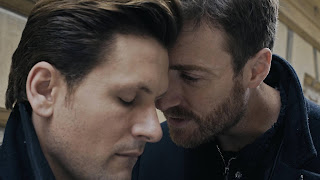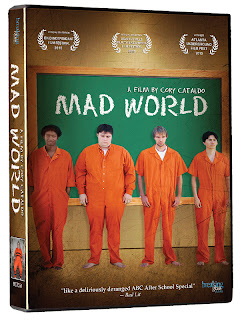Movie Review - X-Men: Days of Future Past
JJ Abrams was able to bridge the divide between what was known about the science-fiction franchise created by Gene Roddenberry and the Hollywood need to play with new and fresh faces. The result was Star Trek (2009). The use of the sci-fi trope of time travel of course was crucial. Abrams' failing though was that ultimately his aim was to abandon what was known and leave the history in the past and not truly embrace it. What Bryan Singer does is the opposite. He abandons the new and fresh faces and what Hollywood might prefer. He instead brings history back into the future and embraces it fully. Whereas the impulse might be to leave the franchise on the note that sexy Michael Fassbender and even sexier Jennifer Lawrence would continue as the leads in the next film, Singer leaves us with the prospects that like Kevin Williamson in Scream 4 the older cast, the veterans, are the ones we should value.
Singer began with X-Men (2000) and followed with X2 (2003). The films were somewhat faithful to the comics, but veered here and there. Singer left and Brett Ratner helmed the third film X-Men: The Last Stand (2006). Its goal seemed to derail the train and close off all possibilities for Patrick Stewart and Ian McKellen from returning, something that Singer seems to reverse.
Screenwriter Simon Kinberg has some plot holes and narrative hoops to jump through to get Singer and the audience there. The movie starts in the future. The year is possibly 2023. There is a war between humans and mutants. Humans have giant robots known as Sentinels, which look like a mix of the Destroyer from Thor (2011) and Amazo, Ivo's android, from the Justice League series.
Some rebel mutants, including Kitty Pryde, Bobby Drake, Bishop, Colossus, Blink, Sunspot and Warpath, have developed a way to avoid the Sentinels, which can track the mutants easily, but they can't defeat them. Kitty, Bobby and Colossus were characters we got to know in the previous films. No introduction is needed.
For Bishop, Blink, Sunspot and Warpath, we only get to know them through action sequences, which show them using their specific powers. It would have been better if we got to know these four new characters. Most of whom don't get any dialogue. Bishop, played by Omar Sy (The Intouchables), gets a couple of lines, but unlike the others whose powers are spelled out by Peter Dinklage, some might not even know what Bishop's super ability is.
Kitty, Bobby and Colossus were students at a boarding school that was founded by Professor Charles Xavier, played by Patrick Stewart. The school was a refuge for young mutants. It was a place where they could be around people like them. It was also a place where they could use their powers without fear of making other humans afraid.
Once the humans started persecuting the mutants, some thought the mutants should stay in the refuge or in hiding until acceptance and peace could be negotiated. Others thought the mutants should fight. Professor Xavier was the one pushing for peace. He's the Martin Luther King, Jr. of mutants. His counterpart is Magneto, played by Ian McKellen. Magneto who was born Erik Lehnsherr was the one pushing to fight.
The unstoppable Sentinels forced Xavier and Magneto to band together for their own survival. Xavier concocts a plan to send Wolverine, played by Hugh Jackman, back in time to stop the Sentinels from ever being created. It's like The Terminator (1984), except instead of the robot going back in time to stop the rebel, the rebel goes back in time to stop the robots.
Wolverine is sent to 1973 where the movie proceeds to be a more direct sequel to X-Men: First Class (2011) in which Charles Xavier is played by James McAvoy and Magneto is played by Michael Fassbender. Ten years have transpired since the end of X-Men: First Class. In the interim, Wolverine learns that Xavier has renounced his powers and Magneto has been put into a concrete prison, a riff on the plastic prison in X2. Magneto has the ability to move and manipulate metal objects through a form of telekinesis, but only metal objects.
This is an ability that can come in handy, but, in the mission to stop the Sentinels from being created, Magneto's presence is not necessary. Yet, the script demands that Magneto be present in order to reinforce the us-versus-them, Martin Luther King and Malcolm X debate all over again.
Fassbender's Magneto is a lot more militant than Malcolm X, but watching how differently he deals with his anger and particularly his loss is compelling when pitted against McAvoy's Xavier. All the performances here are very good, but McAvoy is the standout. He's the tortured telepath, filled with guilt and grief and hopelessness that McAvoy wrestles greatly.
Again, the movie like previous installments in this franchise deals with identity. People have to decide who they want to be and how they're going to live their lives. For McAvoy's Xavier, it's essentially the issue that characters like Mystique, played by Jennifer Lawrence, and Hank McCoy aka Beast, played by Nicholas Hoult, dealt with in X-Men: First Class or characters like Rogue, played by Anna Paquin, dealt with in X-Men: The Last Stand. The issue is whether to give up their powers and basically be normal. Only in McAvoy's hands, it's far better played.
Four Stars out of Five.
Rated PG-13 for violence and action, nudity and language.
Running Time: 2 hrs. and 11 mins.
Singer began with X-Men (2000) and followed with X2 (2003). The films were somewhat faithful to the comics, but veered here and there. Singer left and Brett Ratner helmed the third film X-Men: The Last Stand (2006). Its goal seemed to derail the train and close off all possibilities for Patrick Stewart and Ian McKellen from returning, something that Singer seems to reverse.
Screenwriter Simon Kinberg has some plot holes and narrative hoops to jump through to get Singer and the audience there. The movie starts in the future. The year is possibly 2023. There is a war between humans and mutants. Humans have giant robots known as Sentinels, which look like a mix of the Destroyer from Thor (2011) and Amazo, Ivo's android, from the Justice League series.
Some rebel mutants, including Kitty Pryde, Bobby Drake, Bishop, Colossus, Blink, Sunspot and Warpath, have developed a way to avoid the Sentinels, which can track the mutants easily, but they can't defeat them. Kitty, Bobby and Colossus were characters we got to know in the previous films. No introduction is needed.
For Bishop, Blink, Sunspot and Warpath, we only get to know them through action sequences, which show them using their specific powers. It would have been better if we got to know these four new characters. Most of whom don't get any dialogue. Bishop, played by Omar Sy (The Intouchables), gets a couple of lines, but unlike the others whose powers are spelled out by Peter Dinklage, some might not even know what Bishop's super ability is.
Kitty, Bobby and Colossus were students at a boarding school that was founded by Professor Charles Xavier, played by Patrick Stewart. The school was a refuge for young mutants. It was a place where they could be around people like them. It was also a place where they could use their powers without fear of making other humans afraid.
Once the humans started persecuting the mutants, some thought the mutants should stay in the refuge or in hiding until acceptance and peace could be negotiated. Others thought the mutants should fight. Professor Xavier was the one pushing for peace. He's the Martin Luther King, Jr. of mutants. His counterpart is Magneto, played by Ian McKellen. Magneto who was born Erik Lehnsherr was the one pushing to fight.
The unstoppable Sentinels forced Xavier and Magneto to band together for their own survival. Xavier concocts a plan to send Wolverine, played by Hugh Jackman, back in time to stop the Sentinels from ever being created. It's like The Terminator (1984), except instead of the robot going back in time to stop the rebel, the rebel goes back in time to stop the robots.
Wolverine is sent to 1973 where the movie proceeds to be a more direct sequel to X-Men: First Class (2011) in which Charles Xavier is played by James McAvoy and Magneto is played by Michael Fassbender. Ten years have transpired since the end of X-Men: First Class. In the interim, Wolverine learns that Xavier has renounced his powers and Magneto has been put into a concrete prison, a riff on the plastic prison in X2. Magneto has the ability to move and manipulate metal objects through a form of telekinesis, but only metal objects.
This is an ability that can come in handy, but, in the mission to stop the Sentinels from being created, Magneto's presence is not necessary. Yet, the script demands that Magneto be present in order to reinforce the us-versus-them, Martin Luther King and Malcolm X debate all over again.
Fassbender's Magneto is a lot more militant than Malcolm X, but watching how differently he deals with his anger and particularly his loss is compelling when pitted against McAvoy's Xavier. All the performances here are very good, but McAvoy is the standout. He's the tortured telepath, filled with guilt and grief and hopelessness that McAvoy wrestles greatly.
Again, the movie like previous installments in this franchise deals with identity. People have to decide who they want to be and how they're going to live their lives. For McAvoy's Xavier, it's essentially the issue that characters like Mystique, played by Jennifer Lawrence, and Hank McCoy aka Beast, played by Nicholas Hoult, dealt with in X-Men: First Class or characters like Rogue, played by Anna Paquin, dealt with in X-Men: The Last Stand. The issue is whether to give up their powers and basically be normal. Only in McAvoy's hands, it's far better played.
Four Stars out of Five.
Rated PG-13 for violence and action, nudity and language.
Running Time: 2 hrs. and 11 mins.











Comments
Post a Comment